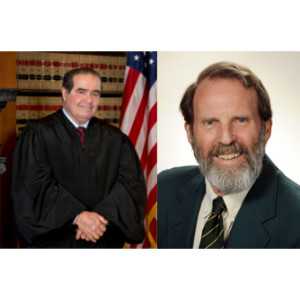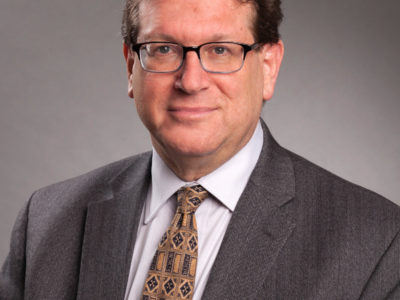Response by Professor Alan B. Morrison
Geo. Wash. L. Rev. Docket (Oct. Term 2014)
Equal Employment Opportunities Commission v. Abercrombie & Fitch Stores, Inc., 575 U.S. ___ (2015).
Docket No. 14-86; argued February 25, 2015; June 1, 2015
Slip Opinion | SCOTUSblog
The facts of EEOC v. Abercrombie & Fitch, decided June 1, 2015, look like the makings of a very interesting, difficult, and perhaps important case involving the question of what kind of accommodations an employer must make when its dress code forbids all caps and headwear, and the job applicant is a Muslim woman who wears a headscarf as commanded by her religion. By the time the case got to the High Court, however, the issue was much more mundane, and that is how Justice Scalia’s opinion for the Court went.
The job applicant, Samantha Elauf, had what appears to have been a very good interview, but for her headscarf, which the interviewer thought might violate company policy on caps. When the store manager declined to settle the matter, the interviewer asked the district manager who said the headscarf would violate that policy, and Ms. Elauf was not hired. She complained to the EEOC, which eventually brought suit challenging Abercrombie’s failure to make an accommodation for Ms. Elauf’s religious practices as Title VII requires.
In the district court, the EEOC prevailed on summary judgment on liability, in part because Abercrombie never discussed, either internally or with Ms. Elauf, a possible accommodation, such as allowing her to wear scarfs other than black ones, a possibility that she had discussed with a friend who worked there before submitting her application. As a result, there was no ruling on whether any accommodation was required, and if so, what that might be. Because Ms. Elauf had secured other employment shortly after she was turned down by Abercrombie, she had no significant financial losses and no longer wanted the job. A jury then awarded her general damages of $20,000.
Instead of leaving well enough (or more likely, bad enough) alone, and not just paying the $20,000 and litigating another day with better facts and more at stake, Abercrombie appealed to the Tenth Circuit, which ruled in its favor. According to that court, Abercrombie’s duty to accommodate did not kick in unless it knew that Ms. Elauf needed an accommodation, which in this case meant she had to raise the issue with the company directly, which she had not done. Thus, the question on which the Court granted certiorari was, in effect, who had to broach the issue of religious accommodation: the applicant or the company and, if the company, in what circumstances did it have to do that?
In one sense, this was an easy case on that question. Although Ms. Elauf had neither said she was a Muslim, nor that she wore the headscarf for religious reasons, there was apparently no doubt in the mind of anyone at Abercrombie of either fact. After all, why else would any employee have to check with a district manager and why not ask her whether she intended to wear the scarf to work? The lurking question under this “who has to go first scenario” is whether the employer must know or just suspect (and if so how strongly) that there is a religious accommodation issue that had to be addressed. Over the objection of Justice Alito, the Court declined to answer that question since it had not been briefed or litigated below. And it may be that in some case, that difference between suspicion and knowledge will matter, but hopefully the message to employers from this case will be: when in doubt, ask and then try to find a way to accommodate, which is, after all, the message of Title VII’s protection against religious discrimination.
There is one other wrinkle to this case that warrants a mention. Title VII has two different bases on which suit may be brought in cases like this: disparate treatment (also referred to as intentional discrimination) and disparate impact, under which facially neutral employment rules can be forbidden if they adversely affect certain groups in ways that are not justifiable under the law. Suits are often brought under both theories, but the remedies are broader under the disparate treatment prong, and there is a right to a jury trial. In this case, because Ms. Elauf no longer wanted a job at Abercrombie, and she had no or almost no lost wages, the only way that she could recover (even in a suit brought on her behalf by the EEOC) was to sue based on disparate treatment, under which general damages are also recoverable. As Justice Thomas pointed out in his dissent, what Abercrombie did was not “intentional discrimination” as that term is ordinarily understood: it simply did not hire Ms. Elauf because her religious practices did not fit with their company policy on what employees should and should not wear. Justice Scalia nonetheless concluded that the EEOC had proven all that the disparate treatment law required because it had established that Abercrombie had deliberately chosen not to hire her because of her religious practice of wearing a headscarf and not to have made any accommodation, and indeed, not to have tried.
Because there were other issues raised by Abercrombie in its appeal, the Court remanded the case to the Tenth Circuit for further consideration. It is hard to imagine why Abercrombie would wish to continue its battle in this case when all that is at stake for it is $20,000, which has to be weighed against the cost of its lawyers’ fees and continuing bad publicity. Moreover, the company has apparently changed its policy regarding headscarves, and so this issue may never arise again for Abercrombie. But that was true when it lost in the district court, and so the case may not yet be over.
Recommended Citation
Alan B. Morrison, Response, Equal Employment Opportunities Commission v. Abercrombie & Fitch Stores, Inc., Geo. Wash. L. Rev. Docket (May 7, 2015), http://www.gwlr.org/eeoc-v-abercrombie-fitch/.



